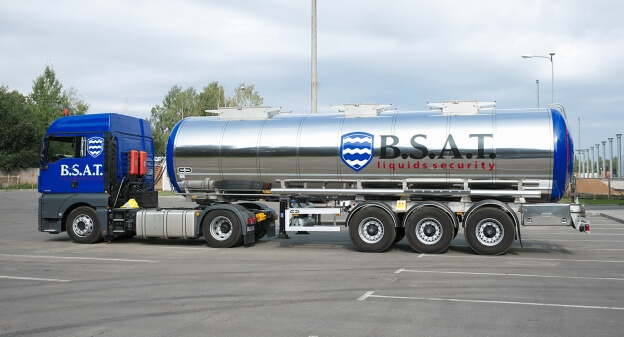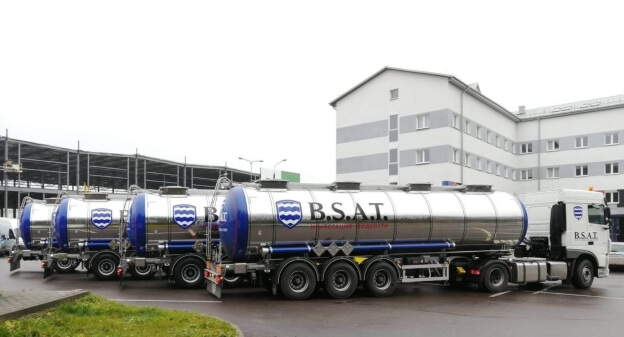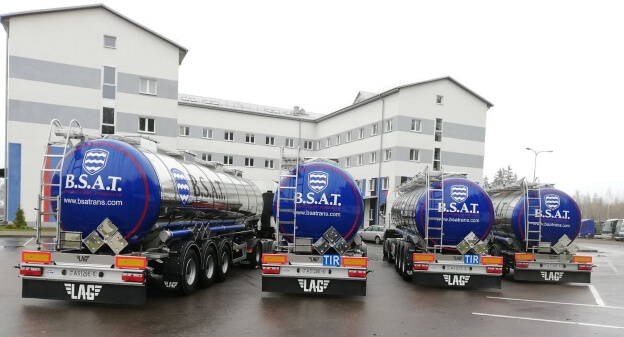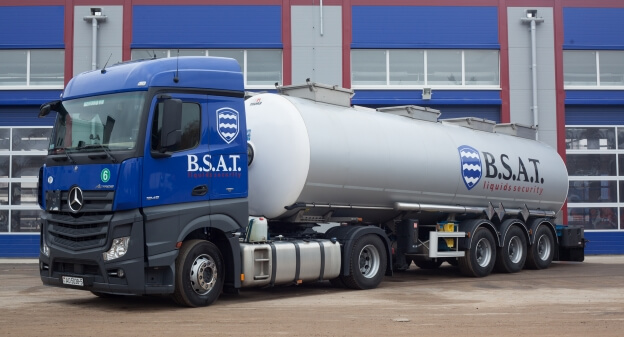Transportation of
liquid dangerous goods
Transportation of dangerous goods by truck is a difficult task, requiring a set of measures and taking into account the large number of requirements of national and international legislation. Only in this case, the organization of transportation will be efficient, safe and economically viable. Transportation of dangerous goods by truck is subject to the requirements of the European Agreement concerning the International Carriage of Dangerous Goods by Road. The established rules are aimed at the creating of conditions for the safe movement and preservation of goods of chemical, pharmaceutical, petrochemical origin.
Legal framework for the arrangement of transportation
Transportation of dangerous goods by truck is governed by the transportation contract. The document is developed taking into account national and international legislation in the field of freight. According to it, the consignor is the responsible party for the registration of the transport documents, the carrier is responsible for the registration of the travel documentation. The person responsible for escorting dangerous goods during transport assumes the following obligations:
- To know the conditions of safe transportation of cargo of a selected danger class;
- To know the transportation route;
- To provide security and escort from the place of departure to the point of destination;
- To conduct periodic external examination;
- To control the loading and fastening.
The rules also prohibit the carriage of dangerous goods by tank trucks in conditions of insufficient visibility, the use of additional tanks for fuel, and off hand parking in transit, when transporting goods of the second and third hazard class.
The success of transportation is in the integrated organization, because all the participants in the transaction are involved in transport activities. The carrier ensures that the driver has the appropriate experience and qualifications in accordance with the provisions of the ADR European Agreement. The driver, in turn, checks the documents received from the shipper, and also deals with the elimination of the consequences of an emergency (if it occurs) before the arrival of the relevant services. It is the responsibility of the driver to maintain an optimal speed limit, to abandon potentially dangerous maneuvers, as well as a total ban on the transport of unauthorized persons in the cab or leaving the vehicle unattended.
Dangerous goods classes
The general definition of a dangerous goods includes any materials and substances with specific properties that may cause danger to the environment, life and health of people. Such substances, under certain conditions, can cause corrosion, release toxic components, ignite or explode. According to the international classification, all dangerous goods are divided into 9 classes:
- Class 1: Explosive materials;
- Class 2: Gases;
- Class 3: Flammable Liquids;
- Class 4.1: flammable solids, self-reactive substances, polymerizing substances and solid desensitized explosives;
- Class 4.2: substances capable of spontaneous combustion;
- Class 4.3: substances that, if they come into contact with water, emit flammable gases;
- Class 5.1: oxidizing agents;
- Class 5.2: organic peroxides;
- Class 6.1: toxic substances;
- Class 6.2: infectious substances;
- Class 7: Radioactive Materials;
- Class 8: Corrosive Materials;
- Class 9: Miscellaneous.
Contractor Choices
Under current legal regulations, the transport of dangerous goods by road in Moscow should be carried out only by a carrier who is well aware of the requirements for the transportation of liquid and solid substances. Only specially equipped vehicles can be used for transportation. The contractor must have a valid license to provide this type of service.
No less stringent requirements are imposed on drivers engaged in the transport of dangerous goods. They must receive appropriate training, and then pass the exam and obtain a standard certificate.
Specialists of our company will be able to undertake the organization of transportation of liquid dangerous goods and guarantee the safety and security of the transported property. We have been successfully operating in the market since 1997 and pay due attention to both the quality of staff training and reputation.
Used machinery
Last projects























